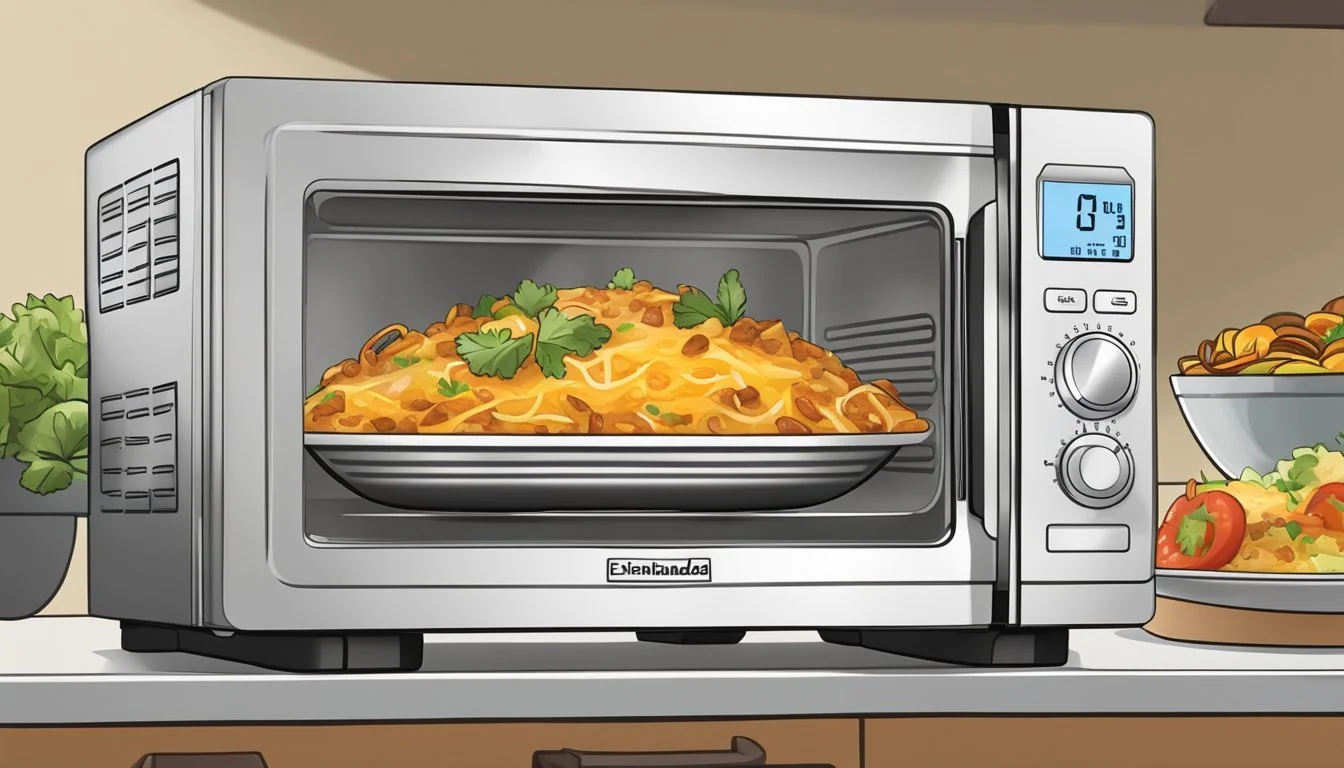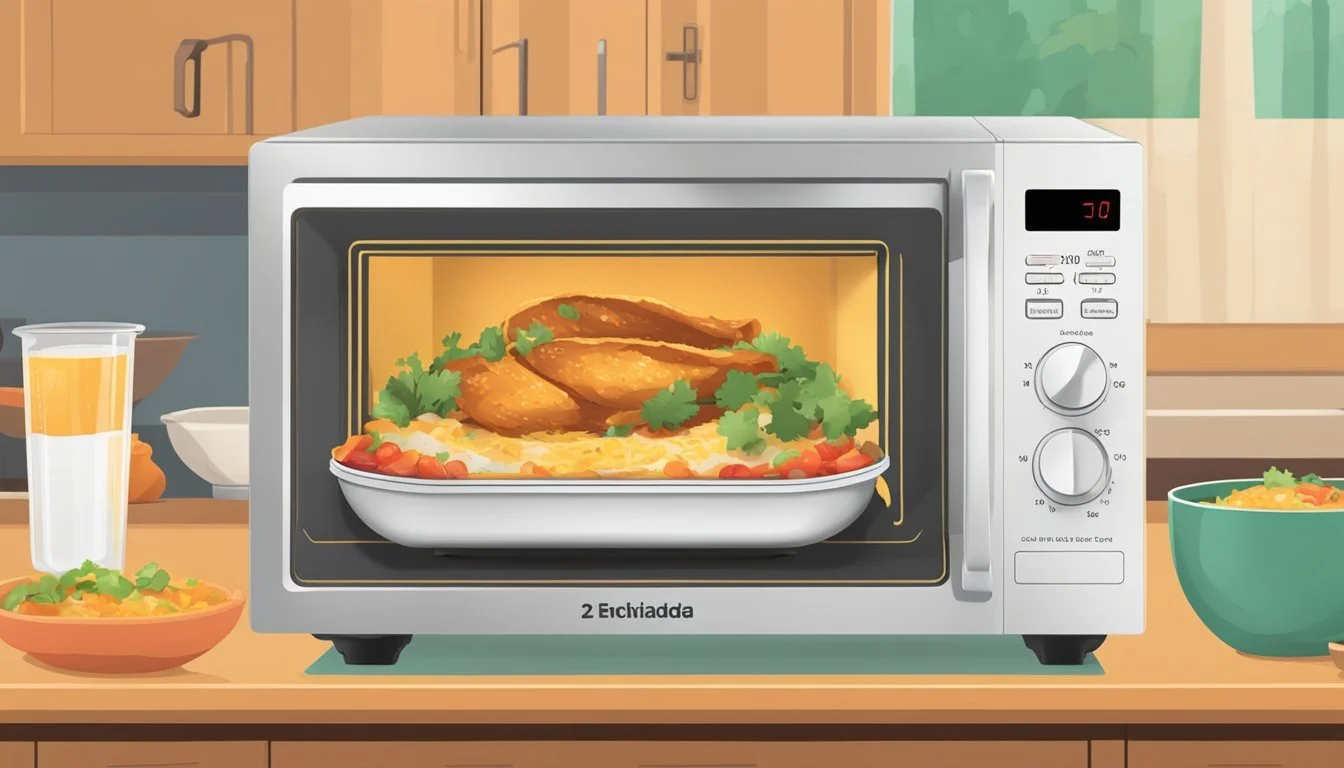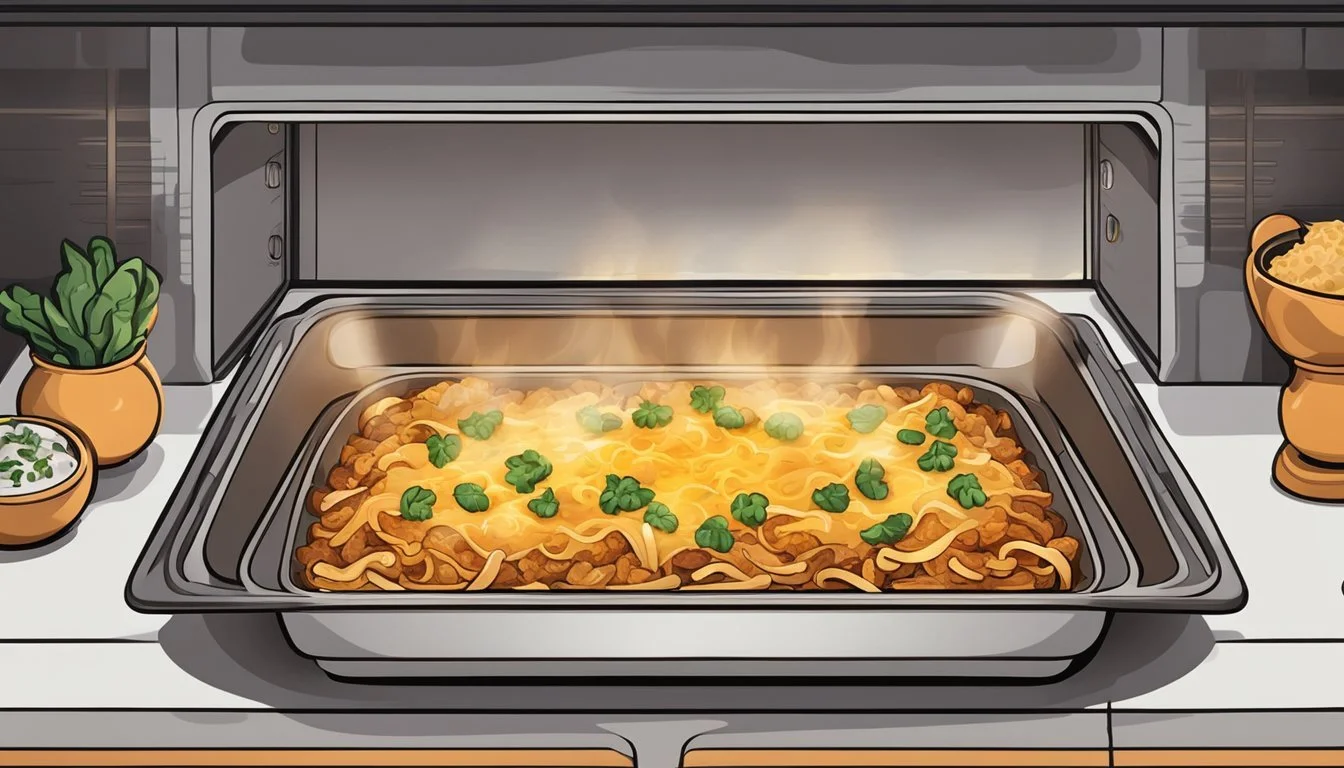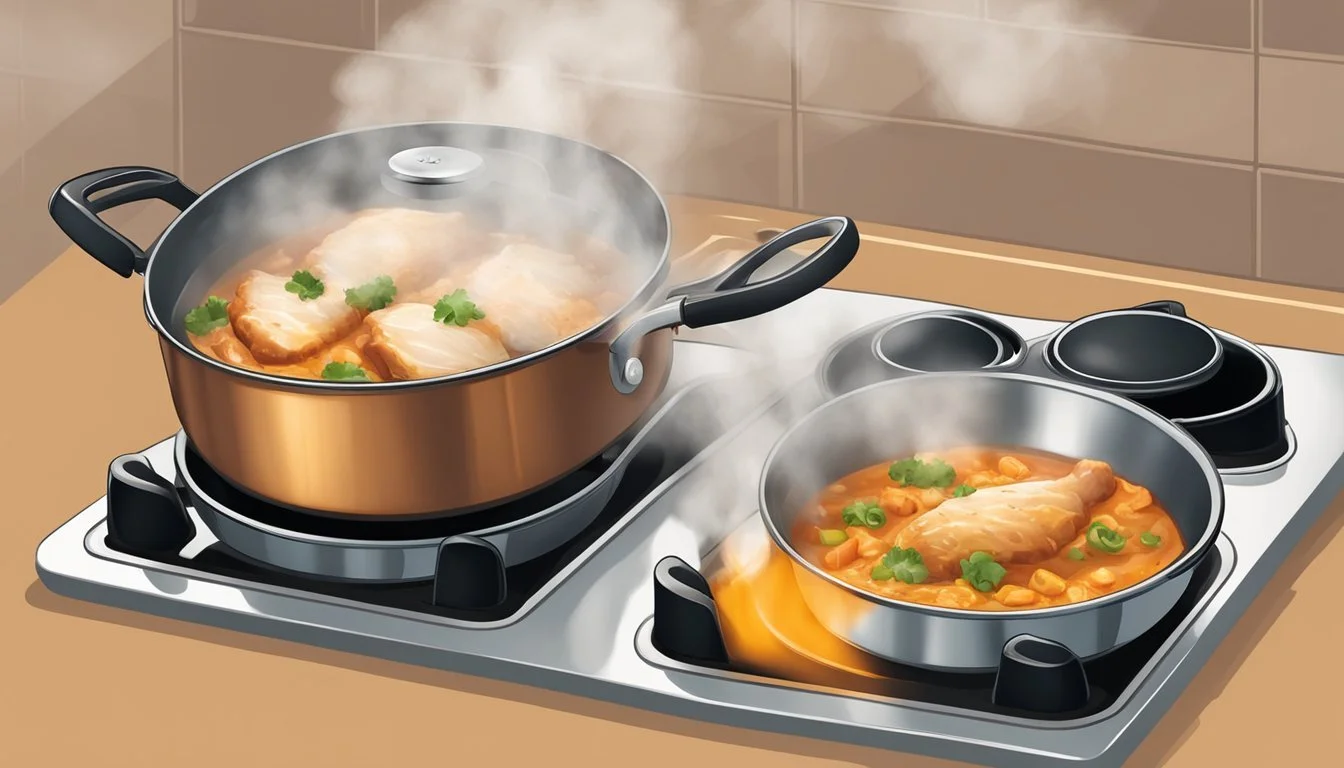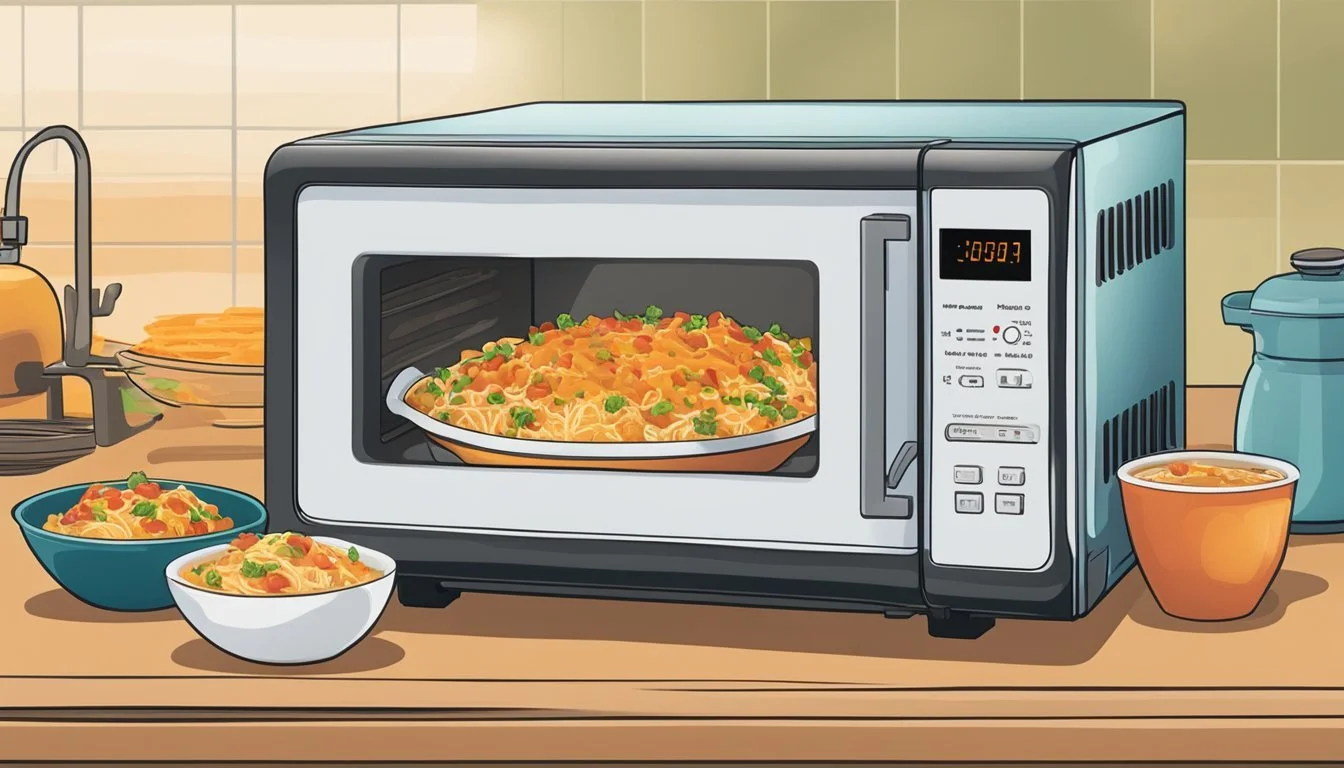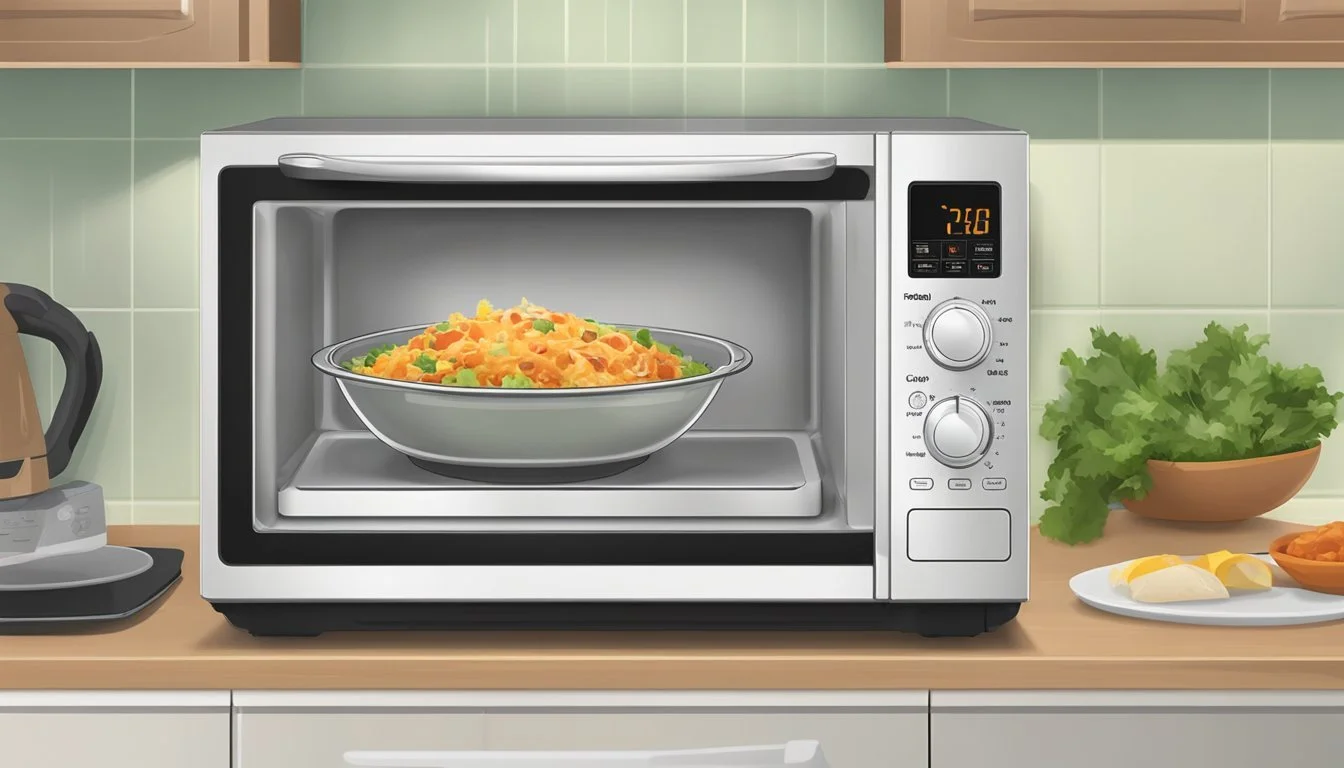How to Reheat Chicken Enchilada Bowls for Perfect Flavor and Texture
Reheating chicken enchilada bowls can be tricky, but ensuring you capture the rich flavors and textures of the original meal is crucial. For optimal results, use an oven preheated to 350°F (175°C) and heat your enchilada bowls for around 15-20 minutes. This method redistributes heat evenly, preventing a soggy base and maintaining the delicious combination of chicken and enchilada sauce.
For those in a hurry, microwaving can be a quick solution. Place the chicken enchilada bowl on a microwave-safe plate, cover, and heat on high for about 2-3 minutes, stirring halfway through. Poking a few holes in the enchilada or cutting it into pieces will help the heat penetrate evenly.
Another effective method is using a skillet. Heat a greased skillet over medium-high heat, place the enchilada bowl cheese-side up, and cover lightly with a lid. This helps re-melt the cheese while avoiding a dry, overheated dish. Sprinkling a bit of water and covering for a couple of minutes can steam the ingredients, preserving the original texture and flavor of the homemade enchiladas.
Benefits of Proper Reheating
Flavor and Texture: Proper reheating retains the original flavor and texture of chicken enchilada bowls. When reheated correctly, the chicken remains tender and tortillas stay soft yet firm. Incorrect reheating can make the food dry and unpalatable.
Nutrition: Appropriate reheating helps preserve the nutritional value of the ingredients. Heating methods that evenly distribute warmth ensure that vitamins and proteins are not degraded.
Safety: Ensuring that chicken enchiladas reach a safe internal temperature of 165°F eliminates potential foodborne pathogens. Proper reheating minimizes the risk of food poisoning.
Economic Efficiency: Proper reheating allows leftovers to be enjoyed without waste. This is both economical and environmentally friendly since it maximizes the use of already-cooked food.
Convenience: Utilizing correct reheating techniques saves time. Different methods like microwave or oven can be selected based on convenience, maintaining quality with minimal effort.
Proper procedures ensure that meals are not only enjoyable but also safe and nutritious.
Preparation for Reheating
Properly handling and storing leftover chicken enchilada bowls ensures food safety and preserves flavor. Follow these practical steps for refrigeration, freezing, and setting up before reheating.
Handling Leftovers
Handle leftover enchilada bowls carefully. Allow the enchiladas to cool slightly before transferring. Use clean utensils and clean hands to avoid contamination. Place all leftovers into separate airtight containers.
If transferring to a bowl, use plastic wrap or aluminum foil to cover it. This helps maintain moisture. Label containers with the date to track freshness. Proper handling ensures the food is both delicious and safe to eat later.
Storage Tips
Store leftover chicken enchilada bowls in the refrigerator if consuming within 3-4 days. Use shallow, airtight containers for better cooling. To extend to 2-3 months, store in the freezer.
Opt for containers designed for freezing to prevent freezer burn. If using plastic wrap, ensure it clings tightly to prevent air exposure. For better results, wrap the bowl with aluminum foil after the plastic wrap.
Pre-Reheating Setup
Before reheating, defrost frozen enchilada bowls in the fridge overnight. For refrigerated bowls, bring them to room temperature for 10-15 minutes. This prevents uneven heating.
Remove any plastic wrap or aluminum foil before reheating. Choose the appropriate reheating method (oven, microwave, or skillet) and preheat the appliance as needed. This setup ensures thorough and even reheating.
Reheating in the Oven
Reheating chicken enchilada bowls in the oven ensures they come out hot and delicious with well-distributed heat. This method can help retain the original flavors and avoid any soggy textures.
Oven Method Overview
Reheating chicken enchiladas in the oven provides consistent heat, which is crucial for maintaining the dish's structure and flavor. This method is ideal for ensuring the fillings heat evenly without drying out the edges.
Pros:
Helps retain moisture
Cons:
Takes longer compared to other methods
Step-by-Step Instructions
Preheat the Oven: Set the oven to 350°F (175°C). Allow it to fully preheat to ensure even cooking.
Prepare the Dish: Place the chicken enchilada bowls in a baking dish. Use an oven-safe dish suitable for your portion size.
Cover with Foil: Cover the dish with aluminum foil. This helps trap moisture, preventing the chicken and tortillas from drying out.
Reheat: Place the baking dish in the oven. Heat for approximately 20-25 minutes.
Check Temperature: Ensure the enchiladas are heated through. Use a thermometer to check if the internal temperature reaches 165°F (74°C).
Optional: If you prefer a crispy top, uncover the dish for the last 5 minutes of reheating.
Tips for Even Heating
Single Layer Placement: Arrange the enchiladas in a single layer in the baking dish to promote even reheating.
Use a Casserole Dish: A casserole dish can hold more moisture, which is beneficial for reheating enchilada bowls.
Sprinkle Water: Add a few drops of water around the edges before covering with foil to maintain steam.
Avoid Overcrowding: Ensure there is enough space between each enchilada to prevent uneven heating.
Rotate the Dish: Halfway through reheating, rotate the dish to counterbalance any hot spots in the oven.
Incorporating these steps and tips can help you achieve perfectly reheated chicken enchilada bowls that are both tender and flavorful.
Microwave Reheating
Reheating chicken enchilada bowls in the microwave offers a quick and efficient method. It is essential to use the correct technique and consider safety measures to ensure the best results.
Pros and Cons
Pros:
Using a microwave is the fastest method for reheating enchiladas. This is especially convenient for those with busy schedules. The microwave also allows for portion control, as individual servings can be reheated.
Cons:
The microwave can sometimes lead to uneven heating. Parts of the enchilada may become overcooked while others remain cold. The texture of the tortillas can also suffer, becoming soggy or too soft compared to other reheating methods.
Microwave Technique
Begin by placing the chicken enchilada bowl on a microwave-safe plate. Ensure there is space between the enchiladas to promote even heating.
Steps:
Cover: Use a microwave-safe lid or plastic wrap with small vents to cover the enchiladas. This helps retain moisture and prevent splatters.
Heating: Set the microwave to medium power. Heat for 2-3 minutes initially.
Check and Stir: Pause and stir the contents. Rotate the plate if the microwave lacks a turntable.
Finish: Continue reheating in 1-minute increments until the desired temperature is reached.
Safety Considerations
When reheating enchiladas, safety is crucial. Always use a microwave-safe plate to avoid any harmful chemicals from leaching into the food.
Avoid using plastic containers unless they are labeled microwave-safe. Use paper towels instead of plastic wrap if preferred to cover the food. Be cautious of hot steam when removing covers after microwaving.
Ensure the enchiladas reach an internal temperature of at least 165°F (74°C) to prevent any risk of foodborne illness. Using a food thermometer can be helpful to check this.
Toaster Oven and Air Fryer Options
When reheating chicken enchilada bowls, both a toaster oven and an air fryer offer efficient methods that ensure your meal remains delicious. These approaches provide crispiness and even heating, which are crucial for maintaining the texture and flavor of the enchiladas.
Toaster Oven Approach
First, preheat the toaster oven to 350°F. Place the chicken enchilada bowls in the toaster oven on a baking sheet. Using parchment paper can help prevent sticking. Arrange the enchiladas, ensuring they do not overlap.
Heat the enchiladas for about 20 minutes. This duration may vary based on the quantity and your toaster oven’s performance. Check periodically to avoid overcooking the cheese, which might cause it to dry out. Adding foil loosely over the top can help avoid excessive browning while keeping the filling moist.
For best results, ensure the enchiladas are heated thoroughly before serving. The cheese should be melted, and the chicken should reach an internal temperature of 165°F.
Air Fryer Method
Preheat the air fryer to 375°F. Place the chicken enchilada bowls in the air fryer basket in a single layer, ensuring there's enough space for heat circulation. Overlapping the enchiladas can lead to uneven heating.
Heat for 5-7 minutes, checking frequently. The enchiladas should be crispy on the edges, and the cheese should be fully melted. Be cautious not to overstuff the basket, as this may result in suboptimal reheating.
To achieve even crispiness and thorough heating, consider turning the enchiladas halfway through the process. Carefully remove them from the air fryer once done. They are now ready to serve with the filling heated and the cheese perfectly melted.
Stovetop Reheating Method
For reheating chicken enchilada bowls, a stovetop method ensures optimal flavor and texture. Start by placing a skillet over medium-high heat and adding a small amount of cooking oil. This helps avoid sticking and adds a slight crisp to the enchiladas.
Once the oil is hot, carefully place the enchiladas in the skillet. Leave space between each enchilada to ensure even heating. 2-4 minutes should be sufficient to crisp up the bottoms.
To prevent the filling from drying out and to melt the cheese evenly, add a few drops of water around the enchiladas and cover the skillet. This will create a steaming effect within the skillet.
Regularly check the temperature and adjust as needed to avoid burning. The goal is to achieve a hot, evenly melted and crisp texture without losing the moisture in the filling.
Serve immediately once the desired temperature is reached. Storing leftover chicken enchiladas properly before reheating can maintain their original flavor and texture, making them taste as good as freshly cooked.
For best results, ensure the chicken enchiladas are stored in an airtight container in the refrigerator before reheating.
Serving and Accompaniments
When serving reheated chicken enchilada bowls, presentation and complementary sides can significantly enhance the meal. Providing a variety of toppings and carefully chosen side dishes will accentuate the rich flavors of this Mexican food favorite.
Presentation Tips
Plating is crucial to make the meal visually appealing. Serve the enchilada bowls in wide, shallow bowls. Arrange the chicken enchiladas neatly and sprinkle chopped cilantro or sliced avocado on top.
Adding a dollop of sour cream not only brightens the plate but also blends well with the flavors.
Utilize contrasting colors and textures. For instance, a sprinkle of crumbled queso fresco or cotija cheese adds a touch of refinement. Make sure the toppings are fresh and vibrant to elevate the dish's appearance.
Side Dishes and Toppings
Pair the enchilada bowls with a fresh salad for a balanced meal. A Mexican-style salad with black beans, corn, and cherry tomatoes is a great choice. Adding a tangy lime vinaigrette completes it.
Mexican rice or refried beans can bulk up the meal, making it suitable for dinner. Serve these sides in small dishes to keep the plate tidy.
For toppings, consider offering sour cream, chopped cilantro, diced onions, and jalapeño slices. These not only boost flavor but also allow for personal customization. Lime wedges on the side can add a zesty touch.
By focusing on plating and side dishes, you can transform simple reheated enchiladas into a memorable dining experience.
Advanced Tips for Best Results
For optimal reheating, homemade tortilla choices can impact the texture and flavor. Corn, whole wheat, multigrain, or flour tortillas each bring unique qualities to the enchilada bowl.
Corn tortillas often yield a more authentic taste, while whole wheat and multigrain add nutritional value.
Using shredded chicken or ground beef requires specific attention. To avoid dryness, add a small amount of water or chicken stock when reheating. Avoid overcooking to preserve juiciness and flavor.
Freezer Tips
If working with frozen enchiladas, thaw them in the fridge overnight for best results. This method ensures even reheating without compromising texture.
Poke a few holes in the tortilla or make small cuts to allow heat to distribute faster and more evenly.
Oven Method
Preheat the oven to 350°F (175°C).
Place the enchilada bowl in an oven-safe dish.
Add a sprinkle of shredded cheese and some water around the edges.
Cover with aluminum foil to prevent over-browning.
Heat for 15-20 minutes, rotating halfway through.
Microwave Technique
For quick reheating, the microwave is efficient. Use short bursts of 1-2 minutes, checking frequently:
Microwave on high for initial 2 minutes.
Rotate the bowl halfway through.
If needed, heat for additional 1 minute intervals.
Adding fillings like extra cheese or spices midway can enhance the flavors. Cover with a microwave-safe lid to retain steam.
By following these advanced tips, reheating chicken enchilada bowls becomes a straightforward process, ensuring savory and satisfying results each time.
Safety and Storage Recommendations
Storing leftover chicken enchiladas properly ensures they remain safe to eat and retain their flavor.
Refrigeration
For short-term storage, place leftover enchiladas in an airtight container and refrigerate. They should be eaten within 3-4 days for best results.
Freezing
To extend their lifespan, wrap individual enchilada portions tightly in aluminum foil or plastic wrap and store them in a freezer-safe bag. Frozen enchiladas can be kept for up to 2-3 months.
Reheating Frozen Enchiladas
Thaw frozen enchiladas in the refrigerator overnight. Ensure they are heated to an internal temperature of 165°F (74°C) to eliminate any harmful bacteria.
Safety Tips:
Never refreeze thawed enchiladas. This can affect their texture and increase the risk of foodborne illness.
Inspect leftovers before reheating. If there's any unusual smell or appearance, it's best to discard them.
Label and date all stored enchiladas to keep track of their storage time. This helps in following the recommended storage durations.
Always handle chicken enchiladas with clean hands and use clean utensils to prevent contamination, ensuring a safe and enjoyable meal every time.
Conclusion
Reheating chicken enchilada bowls can be done efficiently using various methods.
To ensure the best results, opt for an oven. Preheat to 350°F and heat the dish for 10-15 minutes. This method provides even heating.
A microwave is faster. Heat for 2-3 minutes, rotating halfway through.
For a skillet, add a little oil, heat on medium-high, and cook for 2-4 minutes. Cover to steam for even reheating.

